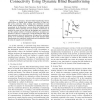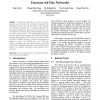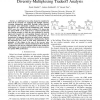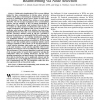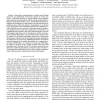83 search results - page 14 / 17 » On Collision-Tolerant Transmission with Directional Antennas |
VTC
2008
IEEE
15 years 6 months ago
2008
IEEE
— We propose a dynamic blind beamforming scheme which allows to benefit from antenna directivity in large mobile ad hoc networks while avoiding heavy feedback to track mobile no...
102
click to vote
CIC
2006
15 years 1 months ago
2006
- Directional antennas are used to improve spatial reuse, but have the problem of deafness. The DUDMAC protocol [9] uses the ORTS, OCTS, DDATA, and DACK mechanisms and a blocking a...
101
Voted
CORR
2008
Springer
14 years 11 months ago
2008
Springer
A multi-hop two-way relay channel is considered in which all the terminals are equipped with multiple antennas. Assuming independent quasi-static Rayleigh fading channels and chann...
93
Voted
CORR
2010
Springer
14 years 11 months ago
2010
Springer
Collaborative beamforming (CB) is a power efficient method for data communications in wireless sensor networks (WSNs) which aims at increasing the transmission range in the network...
124
click to vote
INFOCOM
2006
IEEE
15 years 5 months ago
2006
IEEE
— Space-time communications can help combat fading and hence can significantly increase the capacity of ad hoc networks. Cooperative diversity or virtual antenna arrays facilita...
